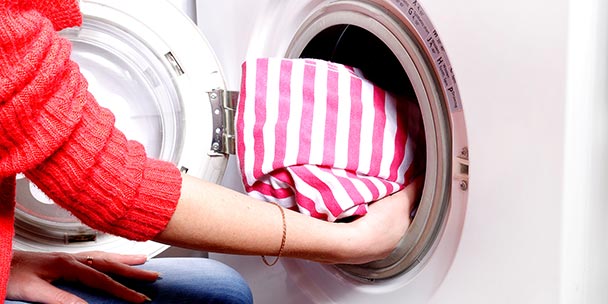
A house can catch fire for many reasons, and one of these can be your low-key clothes dryer. According to the National Fire Protection Association (NFPA), from 2010 to 2014, fire departments across the United States responded to over 15,000 house structure fires caused by washing machines and clothes dryers annually. Of these, at least 90 percent were due to the latter.
These fires were costly, with homeowners losing almost $240 million in property damage. However, they were also deadly. Around 450 people suffered injuries, and 13 died.
Why does this happen anyway?
Two Types of Dryers
To understand why this happens, let’s talk about how dryers work and their two common types. Now, what is a dryer?
Sometimes called a tumble dryer or a clothes dryer, it is a machine that dries fabric by introducing heat and absorbing moisture from the clothes. The tumbling motion, meanwhile, helps ensure warm air can circulate effectively inside.
How the machine creates and gets rid of this hot temperature gives us two common kinds of dryers: vented and ventless.
- A vented dryer produces heat either through gas or electricity. The warm air moves around the tumbler and then exits the machine via an exterior vent or hose connected to a wall. Warm air, therefore, can leave the dryer and the house.
- A ventless dryer doesn’t have an exterior vent. Instead, it recycles hot air in two ways. First, in a condenser dryer, a condenser heats the air, which then warms the dryer. The hot air goes back to the condenser, which also cools the air. Second, in a heat pump dryer, the air remains warm as it gets recycled. However, it is still energy-efficient since it operates at a lower temperature than a condenser dryer.
Of the two, the vented dryer is more likely to catch fire. But why do people still use it? Although ventless dryers seem to be easier and cheaper to maintain, they are more expensive to buy. Moreover, they take a much longer time to dry clothes. The longer duration may offset whatever energy gains ventless dryers provide. Many homes today also already include provisions for the exterior vents.
Why Vented Dryers Can Catch Fire
Overall, more people are likely to use vented dryers, but owning them means regular dryer vent cleaning because they can become a fire hazard.
In the data by the NFPA, about 9 percent of house fires caused by dryers were due to unclassified soft goods or clothing. The report attributed at least 10 percent to appliance casing or housing, as well as 26 percent to clothing. But the leading reason for a dryer to explode or catch fire is lint, which accounts for 27 percent of these incidents.
What is lint? It is a term for the loose small fibers of clothes, particularly wool and cotton. It develops due to friction such as clothing touching another object such as your hand or bag. Dryers and washing machines are also notorious for making loose lint come off because of their movements.
Vented dryers are more likely to accumulate lint than ventless ones since their tumbling motions are stronger and faster. Experts and users believe that condenser and heat pump dryers are gentler. In fact, it’s the way vented dryers work that produces stiffer clothes.
Over time, lint can accumulate not only in the trap but also in the vent. Like any clothing material, it is highly flammable, especially when exposed to many heating components and heat itself. All it takes is a single spark to cause major property damage or, worse, injury and death.
How to Avoid Catching Dryer Fire
Regular cleaning is the secret to keeping the dryer efficient and safe. Usually, a professional can get rid of the lint or maintain the vent at least once a year. However, it still depends on the frequency and the number of clothes dried.
If you live in a large household or use the dryer twice or thrice a week, you might want to have the dryer and vent checked at least once every six months.
It also helps to remove the lint once in a while before and after wearing the clothes, as well as before putting them into the dryer. A Scotch-Brite lint remover at Walmart costs less than $5, and it can already do wonders in maintaining the clothes and preventing the risk of a dryer fire.
Dryers make people’s lives easier, but like every other appliance, they need maintenance and repair to last longer and stay safer.
Meta title: Why Dryers Can Catch Fire
meta desc: Clothes dryers account for a significant percentage of house fires. What does this happen? Find out in this article.
